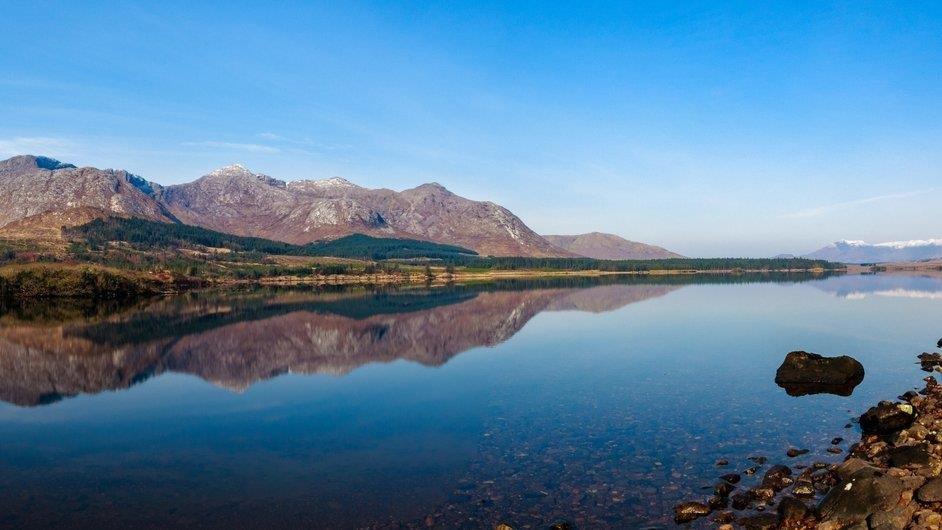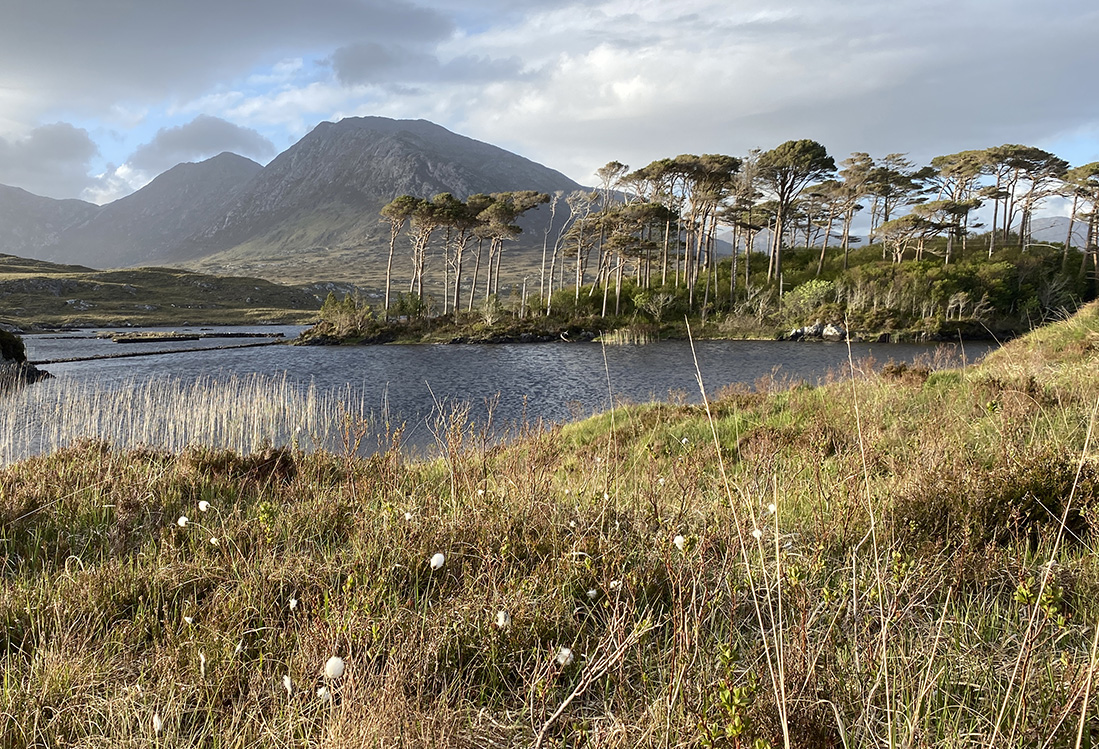Scottish Peatland Experts visit Irish Blanket Bog Restoration Sites
This month Coillte Nature were delighted to host a knowledge-sharing visit from Ian McKee and Tim Cockerill of Forestry and Land Scotland (FLS) on the topic of peatland restoration. Ian is the FLS Peatland Technical Advisor and Tim is a Peatland Restoration Forester based in North Highland, and between them they have been involved with the restoration of thousands of hectares of bog across Scotland.
In Scotland, about 1,000 hectares of peatland was restored last year, with FLS gearing up to restore 3,000 hectares annually from 2025 onwards. This work is being funded by the Scottish Government through Peatland Action, a national programme to restore peatlands across Scotland.
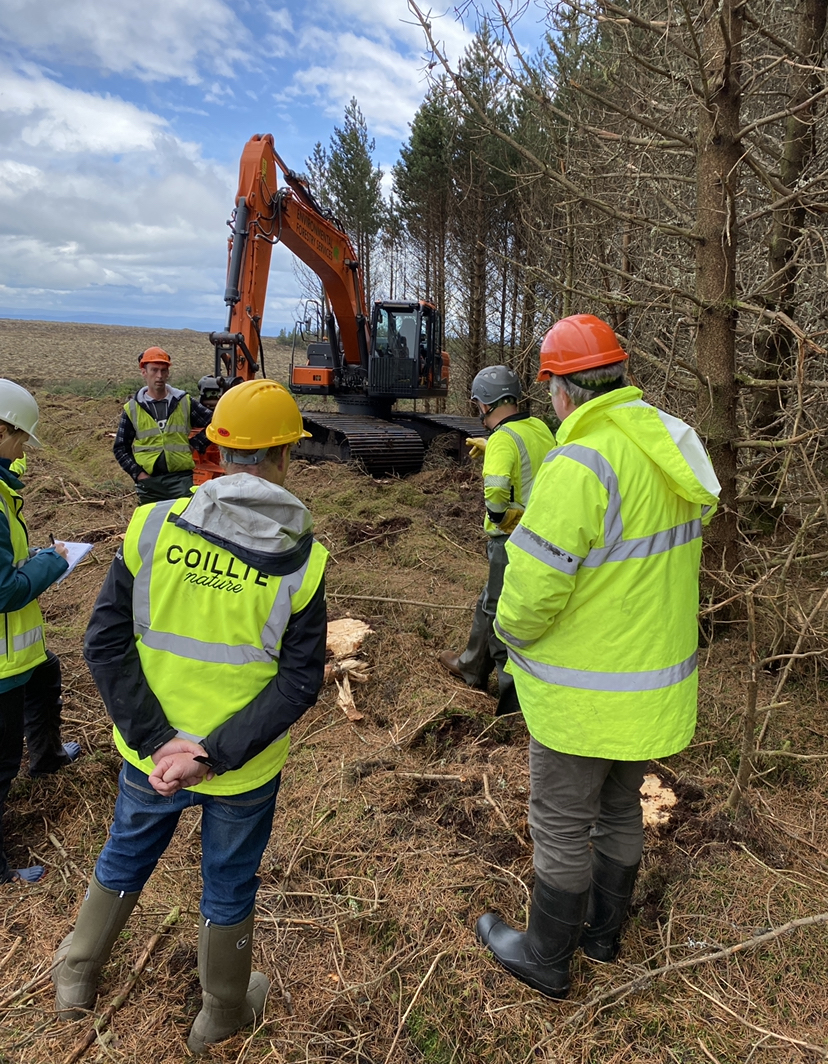
Last May, Ian and Tim led the Coillte Nature Team on a fieldtrip of multiple ‘forest to bog’ restoration sites across Scotland to share the approaches being used there on a large scale. This involves restoring peatland sites which were planted over forty years ago with a crop of pine or spruce.
Healthy peatlands are valuable biodiversity sites supporting many species found nowhere else, as well as being important for capturing and storing atmospheric carbon. They also act as a natural storage and filtration system for rainwater before it flows into our watercourses, which can reduce drinking water treatment costs as well as reducing flooding.
Blanket bog is a relatively rare habitat elsewhere in Europe, with Ireland and Scotland having a large proportion of Europe’s blanket bog. However, most of our blanket bog habitats are in poor condition due to human activity and as a result, are not functioning as they should. Rather than absorbing carbon from the atmosphere, they are releasing carbon which has been stored in the peat for thousands of years.
Ian hails from Co. Antrim and is familiar with many of the peatlands of Ireland, having written the first ever ‘forest to bog’ peatland restoration plan in Co. Tyrone in 2005 with the Northern Ireland Forest Service. The contingent inspected several blanket bog sites in Co. Mayo which were restored between 15 and 20 years ago to see what could be learned as Coillte Nature takes on new large-scale blanket bog restoration projects under the Wild Western Peatlands project.
Bog restoration techniques have developed since these first blanket bog sites were restored, and in particular since 2017. Also, our understanding of the importance of restoring our bogs from a carbon perspective has grown. The aim of bog restoration is to restore the natural functions of the bog by creating the conditions for water-loving mosses to grow which form the basis of a blanket bog. In simple terms, the bog should hold water as it would naturally, which cannot happen if it is artificially drained. For this reason, damming drains is one of the key actions in bog restoration work.
One of the newer techniques which Forestry and Land Scotland have been developing with even more impressive results is called ‘stump flipping and ground smoothing’. When these peatlands were planted with conifers, the land was ploughed, leaving rows of ridges and furrows in the bog. This presents a barrier to quick and effective restoration of the functioning of the blanket bog and its vegetation communities, as the higher parts remain too dry. Once trees have been removed from a site, the ‘stump flipping and ground smoothing’ involves pushing the remaining tree stumps and peaty ridges into the lower furrows, creating level ground more akin to that found on unmodified peatlands. This allows the ground to rewet more evenly and allows the bog to recover quicker, as well as giving better long-term results as there are no longer sections left to dry out above the water table (which would also act as a carbon emitter).
The group visited Derryclare in Connemara which is the pilot site for the Wild Western Peatlands project, a pathfinder project which will restore over 2,000 hectares (ha) of conifer forest back to blanket bog. A detailed management plan has been drawn up for this site and an application has recently been submitted to Galway County Council to change the land use of 280 ha from forest back to bog over the next 10 years. This project will be the largest blanket bog restoration of its type and will use a range of techniques, including those mentioned above which have been found to be effective in restoring peatlands in Scotland.
Following the visit to the site, Ian reported that ‘the Derryclare restoration site reminded me a lot of the projects we have carried out in the West of Scotland. The peat characteristics, modifications, slopes and hydrology are all very similar. My conclusion is that the current restoration methods will restore this site very effectively, and I look forward to returning in the future to see the progress made by Coillte.’
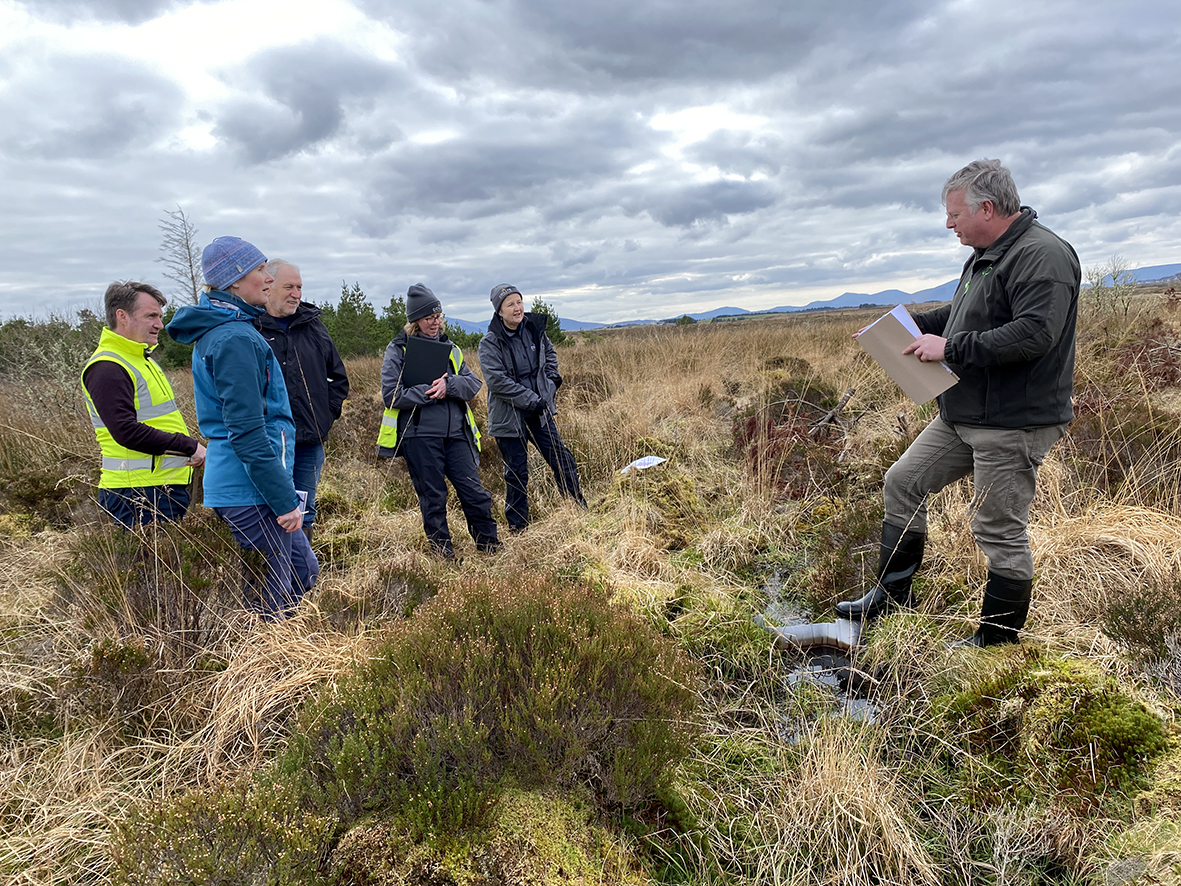
FLS and Coillte staff inspecting a peat dam on a blanket bog restored in the early 2000s
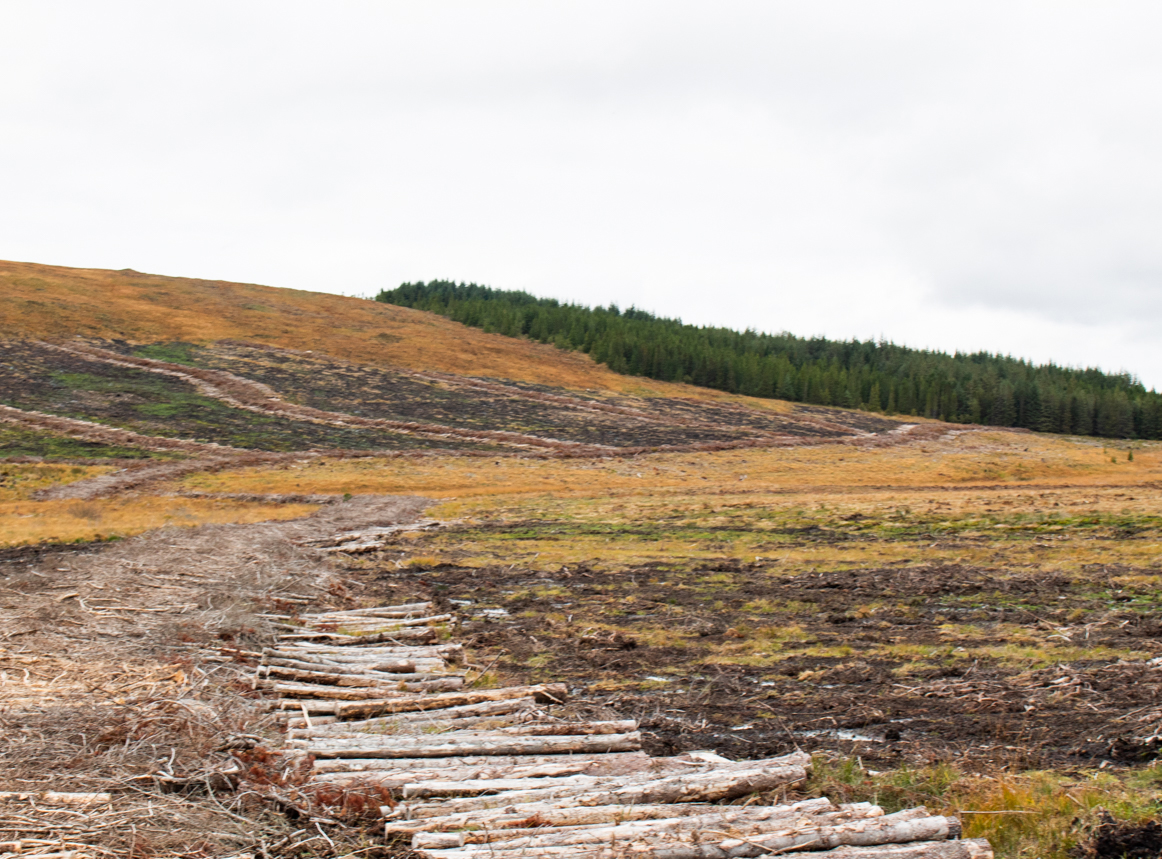
YEAR 1: Bog restoration in Craggie in West Sutherland, Scotland October 2020 after tree harvesting and ground smoothing with one growing season of recovery. The trunks are laid out as a ‘brash mat’ for driving machinery over to reduce compacting the peat.
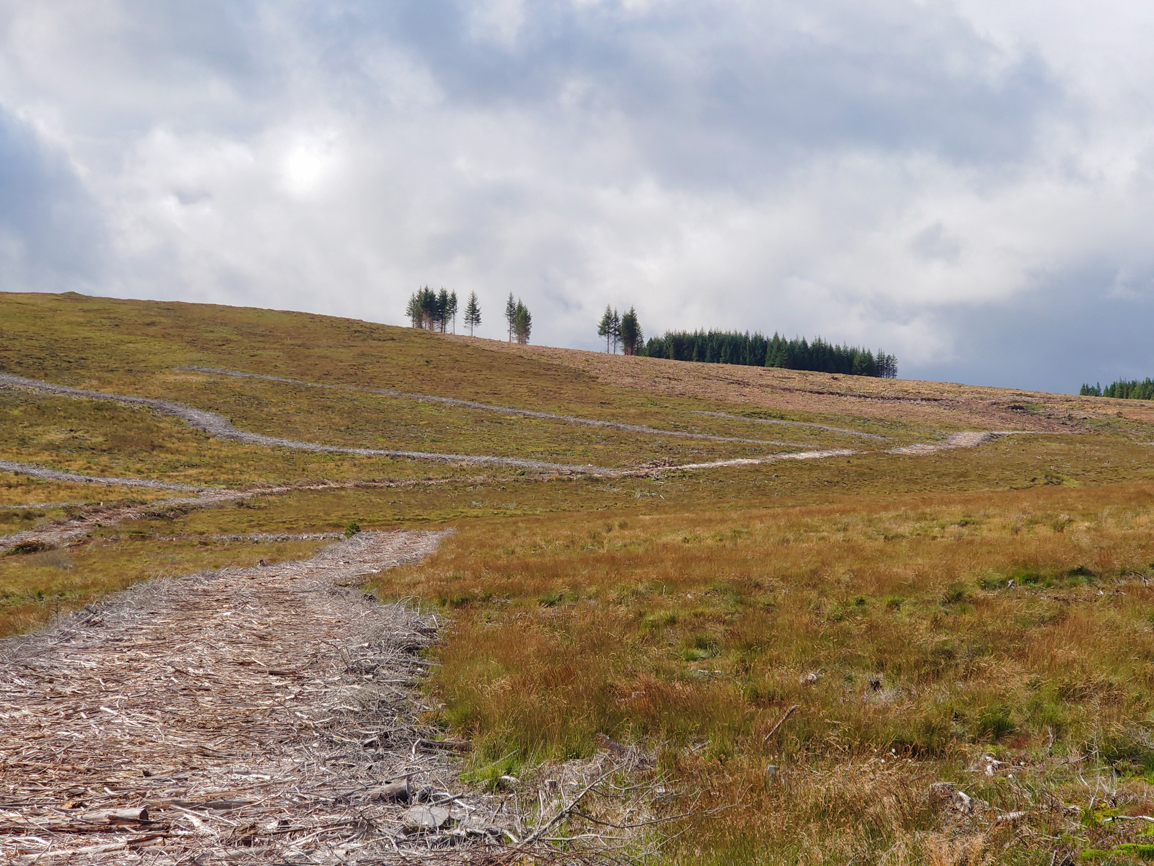
YEAR 3: Craggie in September 2022. The site has now benefitted from 3 growing seasons and sphagnum mosses and other desirable species have grown on the slopes.
Coillte's new strategic vision for forestry will see the redesign of 30,000 hectares of peatland forests by 2050 through a programme of rewetting or rewilding and the work at Derryclare and other Wild Western Peatlands sites will provide learnings which can be applied to sites across the western seaboard.
